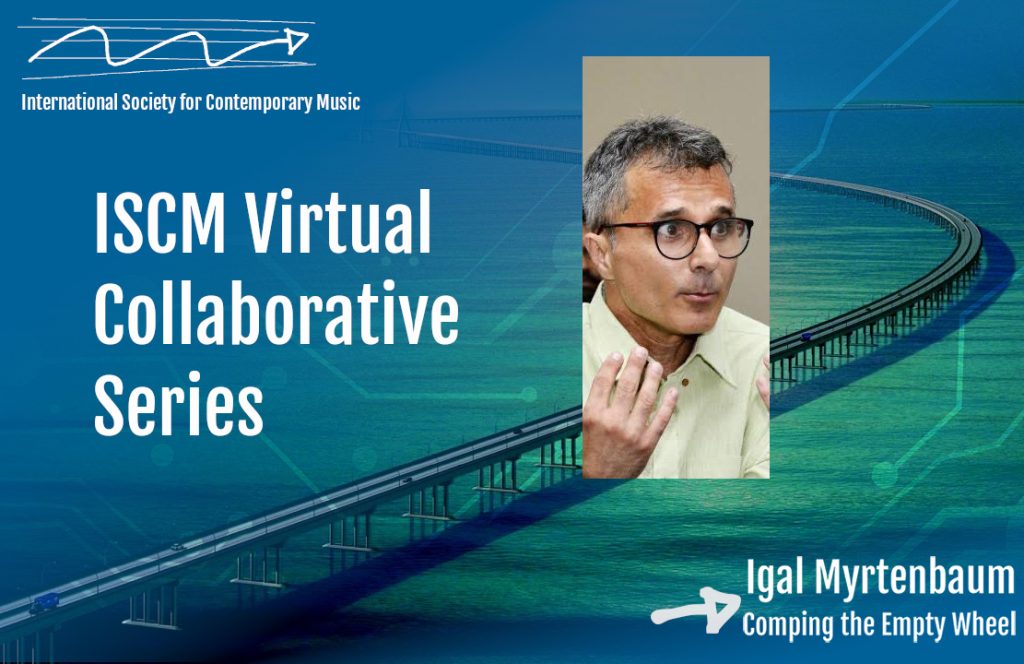Igal Myrtenbaum: Comping the Empty Wheel

Dr. Igal Myrtenbaum is a composer, lecturer and educator. His work and passion ranges from synchronizing sounds to studying how people synchronize, through learning communities and multi-cultural environments. Composing both electronic and music for acoustic instruments, his projects and works are performed world-wide and he is giving lectures and clinics to a variety of audiences from different cultures and backgrounds. His workshops mostly deal with emergent properties as manifested in natural phenomena and dramatic expression, often aided by digital tools. He is a co-founder of the ‘Music and Technology Studies’ at the Bar-Ilan University and has been researching and developing tools for music educators. Committed to explore music in creating cultural bridges, he was invited to lead projects dedicated to cultural preservation and empowerment (“Izozo” – Yangareko foundation”, the Guarani indigenous community, Bolivia), and art education ventures (Foundation for Indian Contemporary Art, FICA). His collaboration with Prof. B.V. Suresh from the University of Hyderabad (India) resulted in the creation of a series of workshops that inspired artists from multiple backgrounds and led to an ongoing research project focused on innovative learning methods entitled Analog Networks. Igal Myrtenbaum was the recipient of the Arts and Science Landau Prize in 2019 and the Prime Minister’s Prize for Composers in 2021.
About his 2018 solo piano piece Comping the Empty Wheel, the composer has written: “The term ‘comping’ is mostly used in Jazz to describe the act of accompanying a solo. But what does ‘comping’ really mean? – Is it a framework for a main course? Or is it a metaphor for essentially any musical act, which implies that the main course is, actually, the unreachable void lying in the center. Both the solo part, as well as the accompaniment, are ‘merely’ comping something. They hold the emptiness shaped by sounds we call music. The work was inspired by a variety of accompanying practices, traveling between background and foreground – but keeping in mind that we can only draw the outer circle, the wheel, and wish for the void to emerge.”
Hagai Yodan, piano
Recorded June 10, 2020, at the Israeli Conservatory of Music, Tel Aviv, with the support
of the Israel Composers’ League.
Recording: Yaron Aldema
